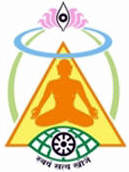
In short words
Preksha International is a non-profit, spiritual, educational, charitable and humanatarian organisation dedicated to serving the society. It is one of the eminent founder institution of Indian Yoga Association. Its mission is to spread awareness of benefits and practise of spirituality and Preksha Meditation at the barest corner of the globe.
The camps and workshops organised by Preksha International have helped millions around the world to overcome stress, depression and violent tendencies and elevated their actions towards a better world.
Historical background
The practice of meditation in India dates back to the time of Lord Rishabh, who was the propounder and the first Tirthankara (ford founder) of Jainism . Evidences in the Agamas (Jain Scripture) reveal that Bahubali , son of Lord Rishabh attained salvation after he practiced uninterrupted Kayotsarg , a form of meditation for twelve months. It is believed that he was so immobile that even creepers grew around his body .
Chakravarti Bharat, brother of Bahubali also attained seamless knowledge through contemplation and meditation. His dedication and perfection in the art of contemplation and meditation led him to become the omniscient - all knowing'.
Similarly, we know that the entire penance (sadhana ) of the twenty-fourth, the last tirthankar of Jainism, Lord Mahavir , revolved around meditation (dhyan ) and relaxation (kayotsarg). Hundreds of his ascetics were clairvoyants, telepathists, and omniscients , who had achieved special powers through the practice of meditation. Successive Acharyas (head of the sect) and the current ascetics of Jain community still continue to live with the same tradition.
The roots of the Jain tradition of meditation are found in the Jain Agamas. In the 28th chapter of Uttaradhyayan , we find a brief and systematic description of the path to salvation. References of this kind of penance can also be found in 32nd chapter of Uttaradhyayan. Findings in the ancient literature Ayaro , illustrates the process of Jain-sadhana in detail. Meditation and Asanas are also expounded in certain chapters of Sutrakritang , Bhagwati, and Sthananga. The description of penance is given in Aupapatika Sutra.
The later Jain Acharyas also contributed significantly towards the development of the practice of meditation. Acharya KundaKunda (1st Cent., A.D.), wrote Samayasara , Pravacanasara and introduced a new way to meditate. Acharya Umaswati (2nd and 3rd Cent., A.D.) edited Tattvartha Sutra in which he expounded the path to salvation through meditation. Acharya Bhadrabahu had practiced Mahaprana Meditation for twelve years. Acharya Haribhadrasuri added a new chapter to Jain-yoga in the 8th Cent., A.D. He introduced a new method and compared Jain-yoga with other methods. He wrote several books including Yoga Bindu, Yoga DrishtiSamuccaya, Yoga Shatak, and Yoga Vinshika. In the 12th Cent., A.D. Acharya Hemchandra wrote Yoga Shastra . The most recent contributions of Acharya Tulsi and Acharya Mahapragya (21st Cent.A.D.) 9th and 10th Acharyas of the JainTerapanth sect, respectively include extensive review and revival of the ancient tradition of meditation known as Preksha Meditation.
Foundation
In the middle age, the practice of meditation was overlooked in Jain tradition.
Acharya Tulsi was the pioneer to lay the foundation for the revival of this ancient art of meditation. Under his supervision, research was also initiated on the ancient Agam texts. The scholastic insight into the UttaradhyayanAgam and other scriptures reveal the facts related to the Swetambar and Digambar (two major Jain-sects) traditions. During the course of the study, diverse elements of meditation also came into light. Acharya Tulsidirected MuniNathmal (present Acharya Mahapragya ) to rediscover this ancient art of meditation and bring it back to life in the context of Jainism. Subsequently, during the Udaipur Chaturmas in 1948 (Vikram Sam vat 2019), work in this direction was initiated. The fundamental elements of meditation were sorted out, experimented, and then put back into practice. Twenty years of dedicated efforts of Acharya Mahapragya finally bore fruits and the scientific path of Preksha Meditation along with spiritual vision came into existence at Jaipur in 1975.